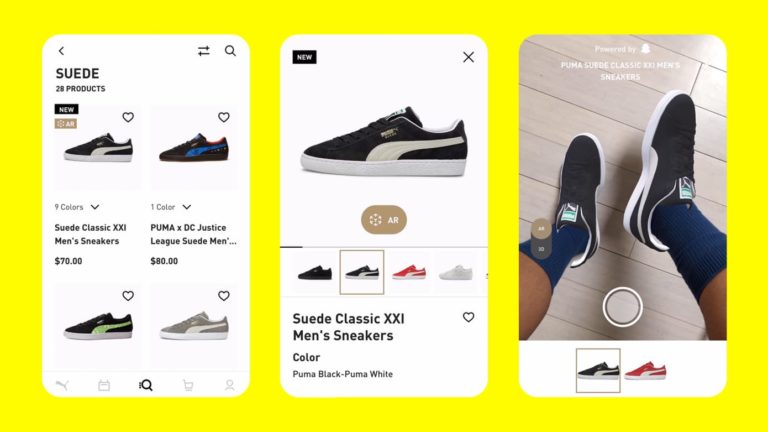
There’s a common rallying cry among AR proponents that the technology will transform the way people shop. Stepping away from inherently-vested narratives, where are the proof points? Does AR shopping – or camera commerce as we call it – resonate with real consumers?
To support that notion, there are several well-worn performance indicators for AR’s ability to boost conversions in eCommerce contexts. It also can reduce product returns, which are a big retailer pain point. All of this results from elevated buyer confidence from 3D visualization.
Beyond performance, there’s consumer sentiment data. Are they asking for AR? And for those who have discovered it, is it working for them? Survey data from our research arm ARtillery Intelligence signals good and bad news for consumer AR traction.
Another data set recently hit our desks from Snap and Magna Media, indicating positive sentiment towards AR marketing and immersive shopping. Consisting of AR campaign performance data and user sentiments, it’s the focus of this week’s Data Dive, with takeaways below.
Data Dive
Before diving into the findings, what was the methodology? Magna Media tracked Snap AR marketing campaigns from brands ranging from Levi’s to LEGO. Campaigns include a variety of countries including the US; and formats including Shoppable AR Lenses and World Lenses.
Here are the highlights we extracted:
– 30 percent of consumers report that AR ads make them feel closer to a given brand, and 15 percent feel more excited about the brand.
– 12 percent of consumers at the “upper-funnel” stages of a purchase journey report that gamified entertainment AR lenses differentiate a given brand.
– In the ‘mid-funnel’, interactive entertainment AR lenses boost memorability and brand perception by 9 percent.
– With those same entertainment lenses, 8 percent of users view the brand and the experience as unique.
– In the lower-funnel stages, Shoppable AR Lenses trigger consumers at the end of their journey, driving 8 percent greater purchase intent, and 7 percent greater brand relevance.
– Similarly, front-facing (selfie) AR Lenses help lift brand image for those closer to purchase, including a 5 percent lift in brand uniqueness and a 4 percent lift in relevance.
– When AR is used in a broader media mix (as opposed to video-only campaigns), brands see 6 percent greater purchase intent and brand preference.
– The Magna study also suggests that placing AR in the middle of a video ad boosts brand perception even further.
Come for the Video, Stay for the AR
One thing that jumps out from these results is the impact AR can have when used in combination with other formats, such as video. This suggests AR can have an additive rather than a substitutive effect on multi-channel ad campaigns. The whole is greater than the sum of its parts.
Notably, the sequencing of these media components can also make a difference. For example, it’s evident that multi-channel campaigns that begin with a video ad, followed by AR product try-ons, can have an outsized impact on performance. It’s a nice one-two punch.
One takeaway is that AR is still new and unproven to most consumers. By coupling it with more established and familiar formats such as video, it can incubate or give the technology “training wheels” to reach larger audiences. Come for the video, stay for the AR…
These results also further validate a concept we explored last week: AR’s ability to shine in several stages of the purchase funnel. It can achieve brand awareness through high-reach channels like Snap. And it can drive sales through high-intent product try-ons.
The bottom line is that marketers shouldn’t see AR as a standalone piece of the marketing mix. It should be infused in ways that complement other technologies. Of course, the individual ad mix and sequencing will depend on each brand, and that playbook is still being written.






